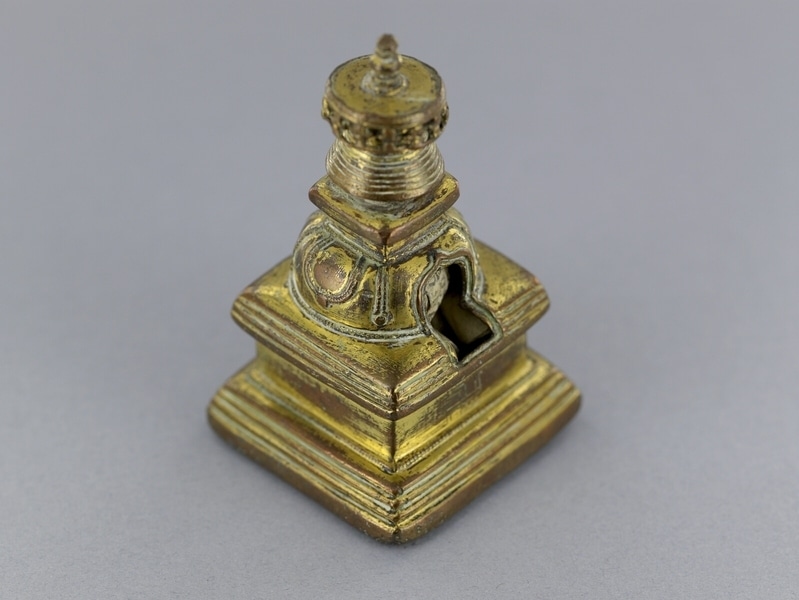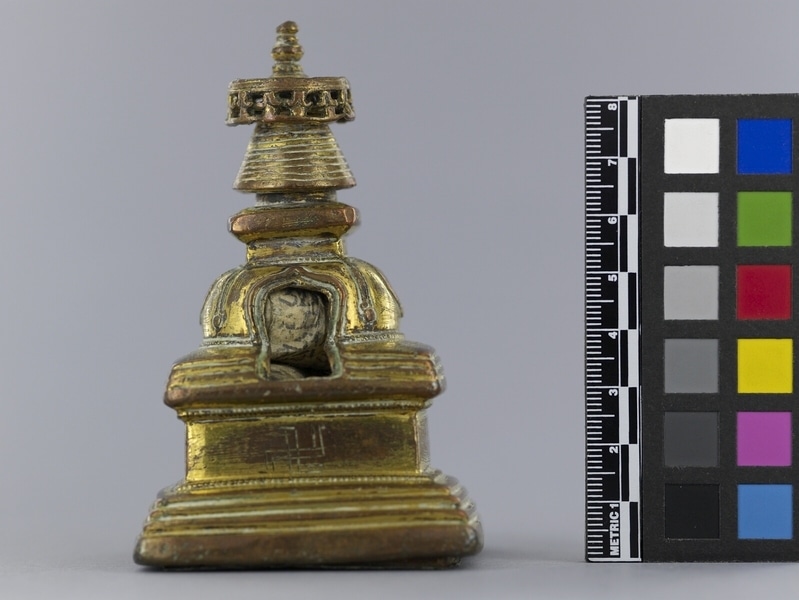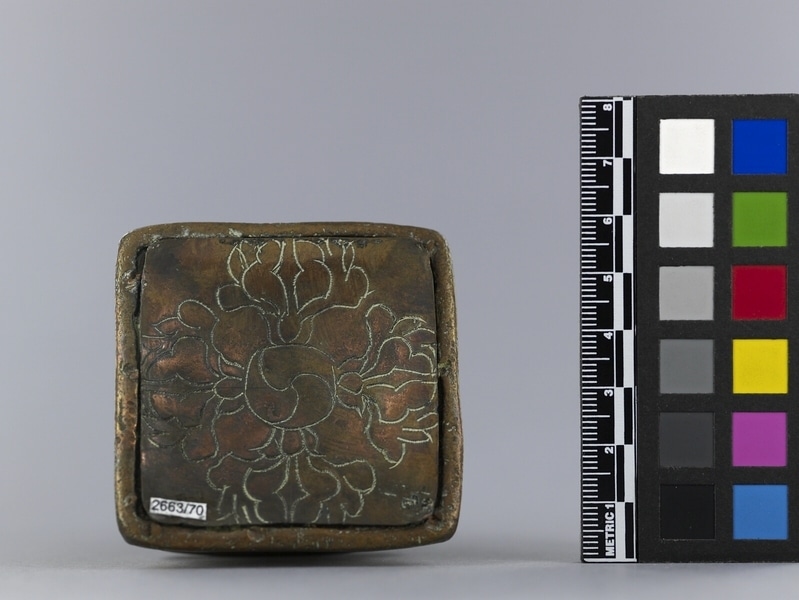Shrine Item Number: 2663/70 from the MOA: University of British Columbia



Description
Portable shrine (Stūpa) of gilded copper on platform. Copper plate set into bottom of base, onto which is incised a quatrefoil foliate design with the traditional double-Vajra symbol on the bottom and the Indian swastika symbol in the front-centre. Bulbous shape on top of base, with an opening in it extending into top of base, holding rolls of paper inside opening (a scripture/mantra roll). Rectangle, truncated cone and umbrella shape above.
History Of Use
Portable Tashi Gomang stūpa, usually holding Tsatsas or Mantra rolls. These portable stūpa were traditionally carried by Maṇiwas, (usually lay and male) religious practitioners and bards in the Tibetan cultural area who, for example, perform Buddhist songs and life-stories of famous Buddhist figures, such as of Drukpa Künlé and Zhapdrung in Bhutan, and excessively recite the Mantra of the Bodhisattva of compassion, Avalokiteśvara.
Item History
- Made in Tibet before 1947
- Collected before 1947
- Owned by Mary Noble before August 22, 2005
- Received from Mary Noble (Donor) on August 22, 2005
What
- Name
- Shrine
- Identification Number
- 2663/70
- Type of Item
- shrine
- Material
- copper metal and paper
- Overall
- height 9.5 cm, width 5.8 cm, depth 6.0 cm
Who
- Culture
- Tibetan
- Previous Owner
- Mary Noble
- Received from
- Mary Noble (Donor)
Where
- Holding Institution
- MOA: University of British Columbia
- Made in
- Tibet
When
- Creation Date
- before 1947
- Collection Date
- before 1947
- Ownership Date
- before August 22, 2005
- Acquisition Date
- on August 22, 2005
Other
- Item Classes
- metalwork
- Condition
- good
- Accession Number
- 2663/0070